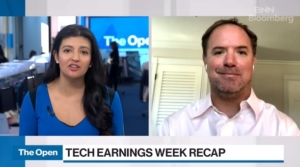What’s in Today’s Report:
- Market Multiple Table: Headwinds Building
Stock futures are higher this morning as Treasury markets are steady despite more turmoil in the Gilts market with the 30-Yr jumping another 20+ bp back towards 5.00%.
Economic data was mixed overnight as U.K. GDP dropped off further than expected in August (-0.3% vs. E: -0.1%) while EU Industrial Production for the same month was solid at 1.5% vs. (E) 0.5%.
Today, there is one inflation data point to watch pre-market: Producer Price Index (E: 0.2%) and if it runs hot, it would likely send yields to new highs and pressure risk assets ahead of the bell.
After the open, the focus will shift to the Fed with two officials speaking through the middle of the day: Kashkari (10:00 a.m. ET) and Barr (1:45 p.m. ET) before the most recent FOMC Meeting Minutes are due to be released at 2:00 p.m. ET.
In the minutes, investors will be looking for any new indication of a timeline for a policy “pivot” or what might result in one as that is still a major catalyst needed in order for stocks to bottom.
Finally, there is a 10-Yr Treasury Note Auction at 1:00 p.m. ET and if the outcome is weak, as was the case with yesterday’s 3-Yr Note auction, and yields begin to rise, that will likely be a renewed headwind on equities in the afternoon.
Bottom line, yields are still the primary driver of the stock market this week and if we see Treasuries remain stable as they are this morning, then stocks could break their multi-day losing streak, however, if yields do rise meaningfully it will be hard for the major indices to hold this week’s lows.


